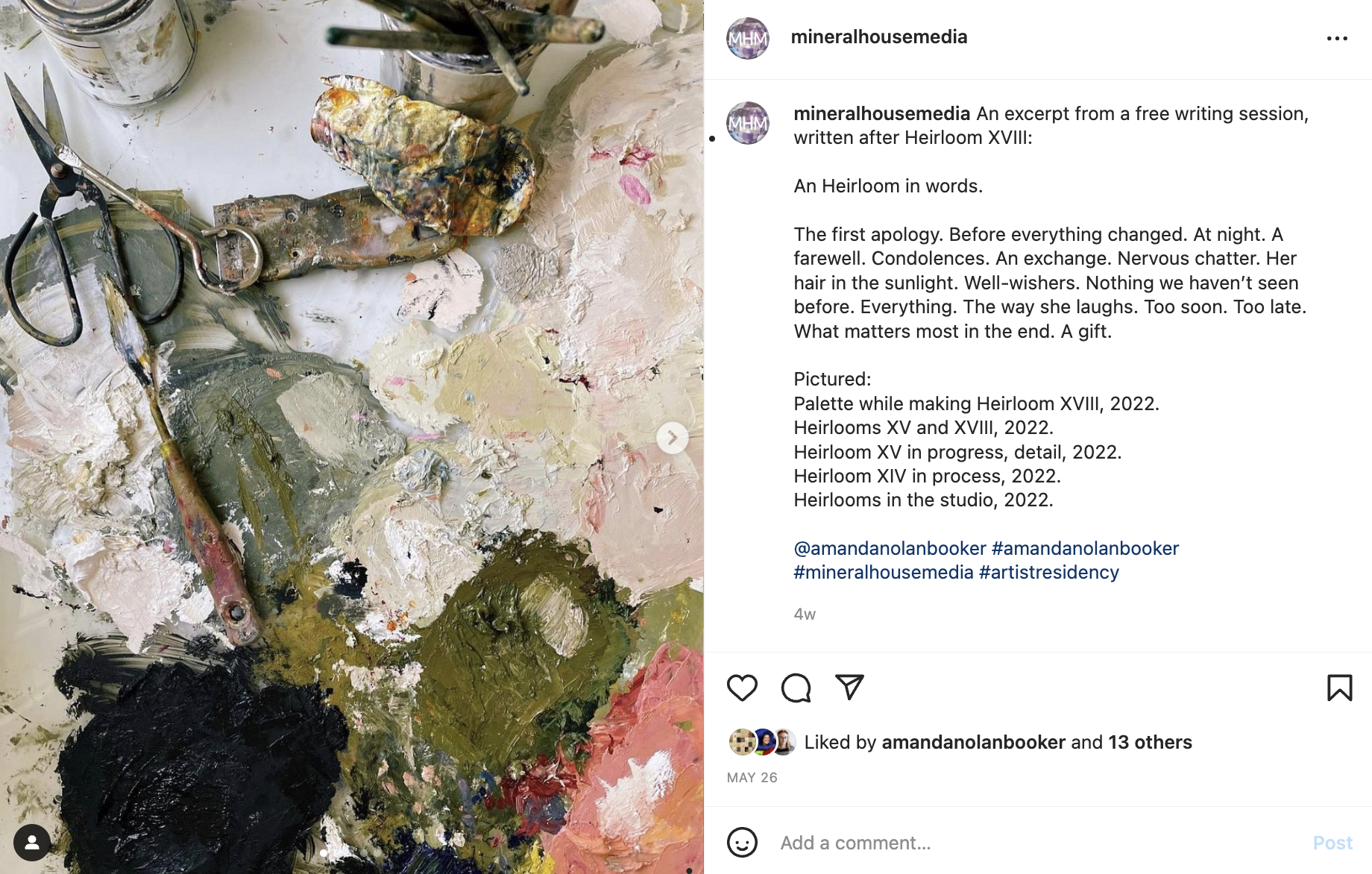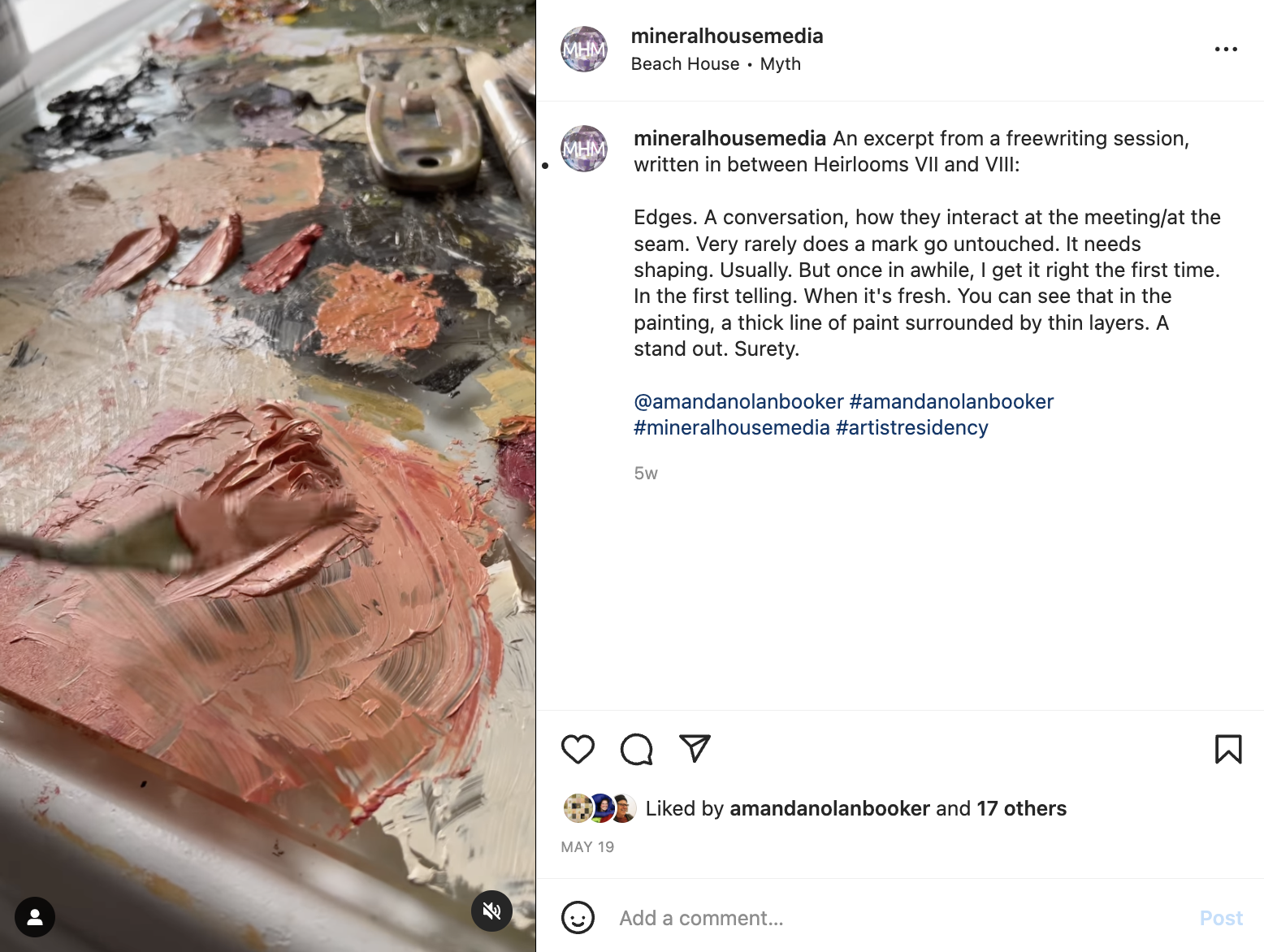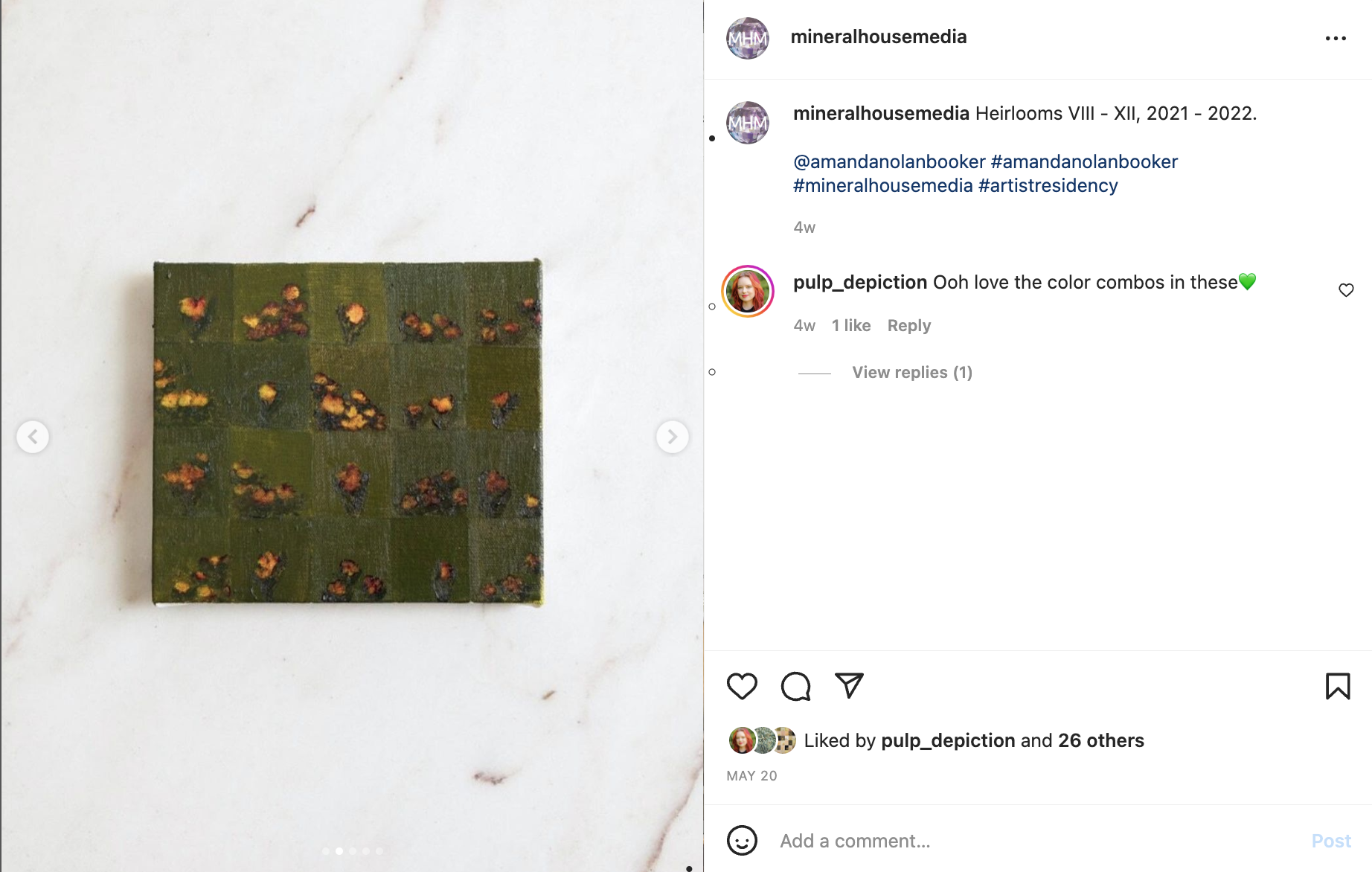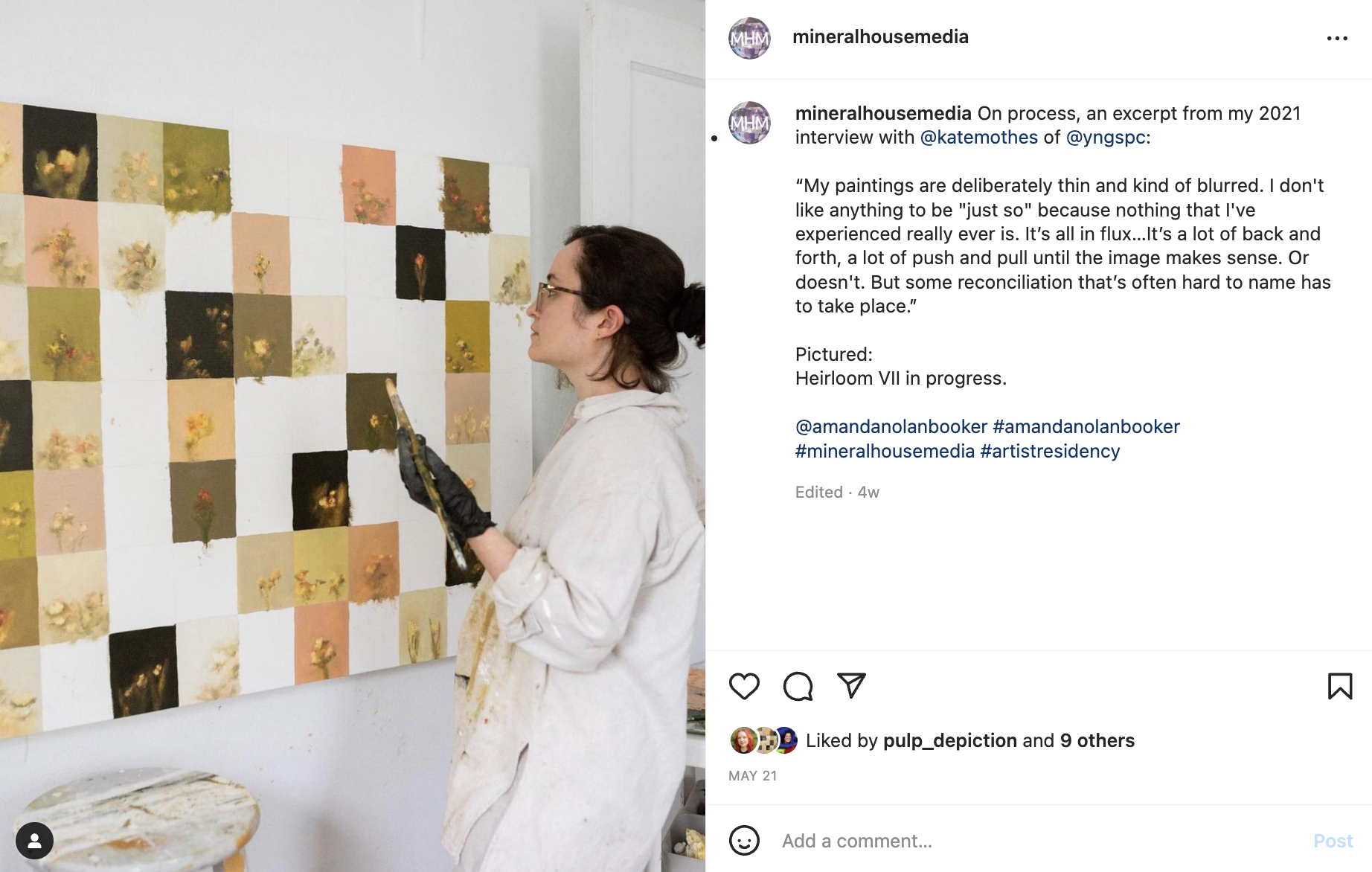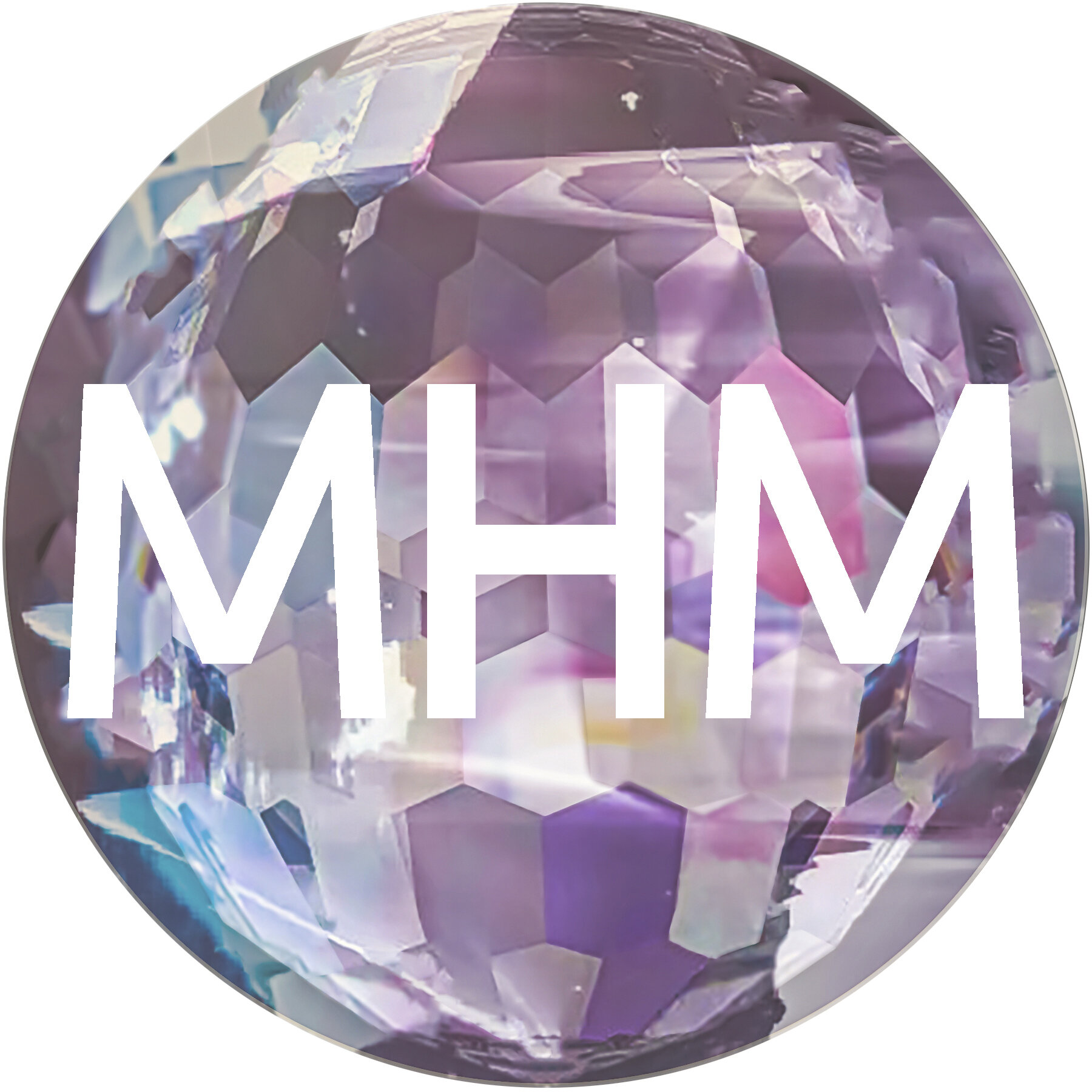Interview with Amanda Nolan Booker
Interview with Amanda Nolan Booker
May 2022 Digital Resident
A conversation with Clay and Olivia of Mineral House Media
“I am interested in the relationship between memory and change. Using nostalgia as a vantage point, I draw on personal experiences for my paintings. Memories undergo alterations in a series of imperceptible shifts over time, contributing to a new perspective. My work considers the uncertain areas of these shifts, the tension between stillness and progression. The imagery I use serves as a catalyst for the subject matter, which remains unseen: feelings of presence, absence, lingering, longing, a sense of ephemerality, and residual impression. Recently, I have primarily referenced flowers and other plant life in my work. In addition to representing people and places of significance to me, they serve as a marker of passage, implying both celebration and mourning while signifying the idea of an eternal return through change.
Ultimately, I am seeking reconciliation between permanence and impermanence, operating along the boundary of recollection. Through these negotiations, moments of ambiguity emerge alongside those that seem almost like clarity. Working the surface of the paintings by excavating, layering, and wiping out is a kind of searching, one that is tied to the passing of time. Things become signified while being indistinct. They are obscured, altered, and retrieved — but not necessarily in that order.”
-Amanda Nolan Booker
MHM: When you are making your work, are you thinking about a particular era/memory, or is it a more vague feeling of nostalgia?
ANB: I started painting flowers with particular memories in mind, but now I’d say I’m mostly driven by feeling. My process has become much more intuitive. All those memories are still there, but my goal isn’t to necessarily transcribe my past. It’s more like the marginalia you find in a much loved book.
MHM: How has having a child changed your practice, both practically and conceptually?
ANB: I’m surprisingly making much more work now that I’m a mother. I don’t know if it’s because I have to be more structured now or what, but I’ve never been more productive in the studio. I think my work is stronger too. All of my favorite paintings were made after (and because of) her.
MHM: Fine-drawn (@finedrawn) is a curatorial practice, similar to what we do at Mineral House in many ways. What has it been like stepping into a curatorial role as opposed to being on the other side as the artist?
ANB: I started Fine-drawn on a whim, with the intention of creating an archive of my favorite artists on Instagram and feeling out the role of curator, to see if I would like it as a career. Long story short: I’ll never take a job as a curator, even though I do enjoy it. I prefer making art to curating, but as long as Fine-drawn remains a quiet place full of understated art that brings people together, I don’t see myself stopping anytime soon.
MHM: Painting is your main method of working, but do you ever create in other ways? Either as a warm up, sketch, or final piece?
ANB: It’s just been painting for a little over a year, I’d say. I’ve honestly never enjoyed sketching as a practice. I’d rather just get to work on the thing itself and problem solve as I go. I do love using watercolors and I’ve been thinking about making some drawings soon, so we’ll see!
MHM: Free writing sessions play a role in your practice. How do you approach reading and writing in conjunction with your paintings?
ANB: The last time I tried to read a book my daughter scribbled on pages, wiped slime on pages, and ripped pages out, so I haven’t been able to do that in awhile. When she permits me to write on my laptop (she often closes the computer and takes it to the kitchen table far, far away from me), I squeeze in a freewriting session. I absolutely love writing and it helps me make better paintings. My paintings inform my writing and the writing feeds the paintings, so, while I don’t consider the poems and other things I write part of the final piece, they prolong its life by allowing me to think about it in more than one way.
MHM: Can you tell us more about the transition from working with specific memories to general feelings? Are there lingering elements of portraiture in the flowers you work with?
ANB: The work of intentionally revisiting and really scrutinizing my personal memories was taking a toll. I don’t think I realized it until I felt lighter, probably around the time I began making Heirloom paintings. It’s not that I was only making paintings about heavy things and it’s not that Heirloom paintings don’t carry any weight, but by allowing myself to work intuitively (and kind of in response to everything all at once), rather than actively scouring my past for a specific memory, I can address it all in no certain terms. With that being said, I absolutely think there are traces of the specificity I used to rely on present in my current work. It’s all there.
MHM: Your heirloom series employs a similar strategy to artificial intelligence tools such as This X Does Not Exist (a program that generates realistic fake versions of real things). The flowers you paint don’t exist, but we can still read them as flowers. How do you arrive at an image recognizable as a flower? Why is it important that the flowers be unidentifiable?
ANB: I set out to paint a flower, but it’s not an herbarium. Because I don’t rely on reference images or paint from life, I can’t say “oh, yes, that’s a tulip and this is what it means”. Instead, I might recognize the image as a tulip and think “my daughter’s favorite flower is a tulip” and feel a sudden rush of affection. That recognition could take place at any point during the painting process. If it’s closer to the beginning, I can choose to go with that and make decisions based on that rush of affection I felt, or I can begin to reshape it. Again, it’s very intuitive. Flowers are a loaded subject matter and I don’t want to get caught up in the symbolism of it all. It’s not that the flowers need to be unidentifiable, but that there should be room for interpretation.
MHM: Can you tell us how you think about boundaries and in-between spaces?
ANB: When I was making the first Heirloom, in the spring of 2021, it was difficult for me to use a grid. I’ve never liked using line to denote space. So, I told myself not to linger at the edges. And it’s a mantra I carry with me. It helps me not to get too tight and overwork the painting, but more than that, it helps me not to prioritize or give unnecessary weight to beginnings or endings. Boundaries and in-between spaces, it’s all made of the same substance.
MHM: How do you choose what color to make the background of a particular flower?
ANB: I have a color palette in mind before I get started, one that speaks to the overarching memories/feeling I want for the final piece, but for the most part every move is in response to the one that came before it. With the Heirloom paintings, even though there’s a grid, I don’t work in any particular order. I jump around, each section informing the ones surrounding it, but also determining colors I use across the painting. It’s very much a conversation, nothing left unchanged by another.
MHM: What/who is most influencing you right now? (i.e. books, artists, colors, podcasts, music, etc.)
ANB: My daughter/motherhood inspires me the most. Just a month ago I was making a painting and could hear her while she was playing outside with her dad. When I stepped back from the painting I saw just how pink it was, more than I’d ever attempted before. Just listening to her laughter made me choose colors she’d love.
Amanda Nolan Booker is a painter based in Chattanooga, Tennessee. In 2020, she received her BFA in Painting and Drawing from the University of Tennessee at Chattanooga. Her work was most recently included in Intimate Spectres, curated by Kate Mothes of Young Space, and Tiny Things at Wavelength Space. In addition to her studio practice, Amanda is the founder of the curatorial project Fine-drawn. Through opportunities including exhibitions, interviews, studio visits, and Instagram features, Fine-drawn invites artists in all career stages to share their work with an audience interested in understated contemporary art. The first Fine-drawn exhibition, Places We Have Never Known, was held at Wavelength Space in Chattanooga in the spring of 2022.
